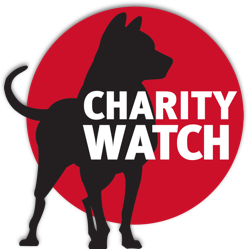Large Asset Charity Threatens to Close Hospitals
Aug 01, 2009
"Unless we do something, the clock is ticking and within five to seven years we'll probably be out of the hospital business and not have any hospitals." --The Associated Press (AP), 4/10/2009, Comment by Ralph Semb, Board Chairman of Shriners Hospitals for Children, reported April 2009
This is not what you would expect to hear from the head of a charity that could operate for 11.6 years at current spending levels without raising another penny. Shriners Hospitals for Children (Shriners) is #4 on AIP's Large Asset Reserves Chart in the current Charity Rating Guide & Watchdog Report, reporting a $9.7 billion fund balance in its most recent available audit of 2007. Shriners declined to disclose to AIP a more current accounting of its financial position.
Shriners' Board Chairman Ralph Semb told the AP in April 2009 that Shriners' endowment size had fallen $3 billion in less than a year, from $8 billion to $5 billion, and that its annual budget has increased in the past two years by about $200 million to $856 million. Shriners' "board designated endowment" was $6.9 billion in 2007, according to its audit. Semb said that Shriners' endowment would have to grow to $12 billion by 2014 in order to keep all of its hospitals open, according to the AP.
While Shriners may be pleading poverty, this has more to do with how Shriners likes to spend its money than how much money it actually has at its disposal. Historically, the charity's policy has been to invest much of the funds it receives from donors and other sources, using only the interest earned on these investments to run its programs without touching the original funds. This policy is more typical of a private foundation than of a public charity. And unlike a restricted endowment which legally prevents a charity from using such funds, Shriners' "board designated endowment" is simply an internal designation that the charity uses to describe funds that it has set aside for investment. Less than $1 billion of the charity's $9.7 billion fund balance is permanently restricted by donors or other third parties, meaning the vast majority of the charity's funds are available for it to use for its general operations if it chooses to do so.
According to a note in Shriners' 2007 audit, "In order to preserve the value of the investment portfolio and to eliminate the impact of market fluctuations on operations, the Board designates only a portion of cumulative realized gains for support of current operations." Essentially, Shriners is claiming that its policy of reinvesting most of its investment gains and spending only a portion on operations will help the organization maintain operations during market changes -- ironically, now that the market has changed, as it did in the past year, it says it has to reduce operations.
While Shriners has experienced significant declines in its endowment funds, AIP believes that it has exaggerated the effect of these declines on its ability to continue its operations. Most charities have only a fraction of their annual budgets in reserve and would be thrilled to have an endowment worth over five times their operating budgets, as is the case with Shriners. Only 4% of charities with budgets of over $5 million have operating reserves worth more than one year of their expenses, according to a July 2009 Urban Institute study of the 2006 finances of Washington DC area groups. The study also found that 57% of all the DC area charities had less than three-months in reserve and 28% had no reserves.
There are not enough charitable resources in this country for every charity to stockpile funds worth several times their annual budgets, and operate using only the interest income generated by these funds. AIP believes that very popular and highly regarded charities such as Shriners are in an excellent position to fund their operations through large corporate and foundation grants, donations from individuals, investment income from a more modest reserve of no more than three times the charity's annual budget, and other various revenue streams. In addition, it is important to note that not all of the funds that Shriners lost in the market are likely to be gone forever - investors often recoup their losses as the market recovers from a decline.
According to the AP, on the agenda for Shriners' annual meeting this July is to decide whether to take a 30% budget cut or to permanently close six of its twenty-two hospitals in Erie, PA; Galveston, TX; Greenville, SC; Shreveport, LA; Spokane, WA; and Springfield, MA. The decisions made at this meeting were not known at the time this publication went to press. It is certainly possible that other reasons may exist for closing some of these facilities, such as to consolidate operations in order to provide more efficient orthopedic, burn, and other care to children. In light of Shriners' large stockpile of available funds, AIP does not believe that it should be cutting its operations.
Update: Shriners members voted to deny the proposal to close six hospitals and to obtain additional revenue by starting to accept insurance from patients, according to a July 9th report from CNN.
